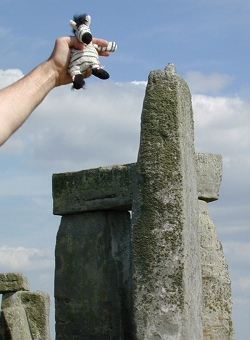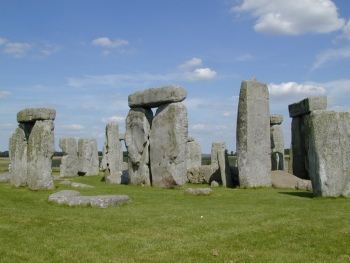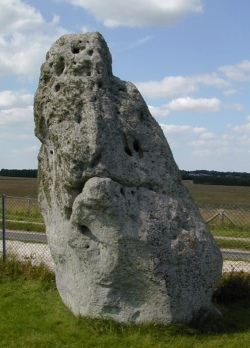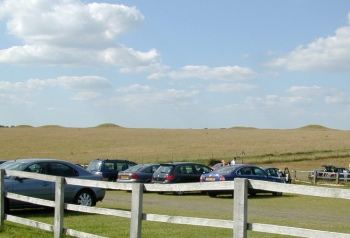

 |  |
Stonehenge continued |
||
|
The trilithons and circle were built using techniques which copied woodworking. The lintels were 'fixed' to the tops of the uprights using mortice and tenon joints. One of the tenons can be seen exposed at the top of this upright. |
 |
|
 |
Although it is the stone circle that people in their many thousands come to visit, it is important to understand that Stonehenge is part of a much wider landscape of 'ritual' monuments dating from the Neolithic and early Bronze Age periods. |
|
The Heel Stone sits within a small circular ditch at the entrance to Stonehenge. There is evidence to suggest that it once stood with another stone or perhaps a line of several. It is cut off from the Avenue by the modern road; the Avenue once formed a processional way into the monument and is marked by a low bank and ditch on either side. It is best seen from the air, or under a light dusting of snow. |
 | |
 |
The monument was a sacred place for many millennia, and it was a focus for burials. Many barrows survive in landscape surrounding Stonehenge. This row of Early Bronze Age round barrows can be seen on the horizon behind the present-day visitors' car park. |
|
Back to prehistoric sites | ||